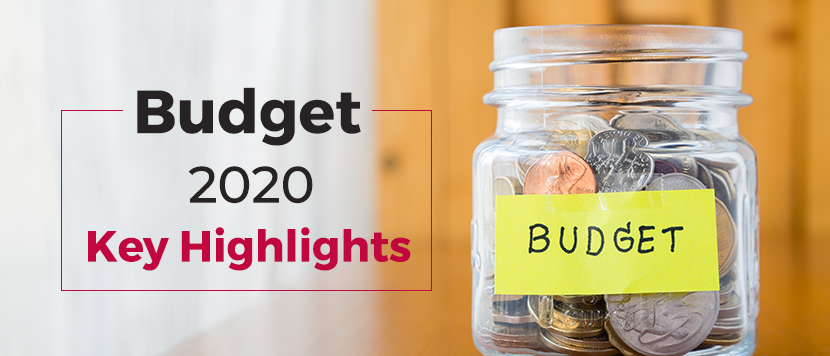Union Budget 2020 – What’s It All About?

Last Updated: 8th August 2022 - 06:41 pm
Budget 2020 was rich on expectations but the exemptions in the budget were much lower than what the market desired. The impact was visible in the performance of the stock market indices which cracked in response. While a detailed analysis is still due, the immediate reaction of the market appears to be that there was no big bang announcement in the Union Budget despite the tough macro conditions. Here are some of the major announcements in the Union Budget 2020.
Response to macro pressures
-
Nominal growth for fiscal year 2020-21 has been pegged at 10%. The real rate of GDP growth could be in the range of 5.5% to 6% depending on the nominal growth actually achieved as even 10% does look quite steep at this point in time.
-
The budget 2020 has fully utilised the 50 bps leeway on fiscal deficit offered by the N K Singh Committee. For 2019-20, the fiscal deficit has been pegged at 3.8% instead of 3.3% while for the fiscal year 2020-21 it is pegged at 3.5% instead of 3%.
-
There is some positive impact on post-harvest infrastructure. To improve post harvest infrastructure, including cold storage, the budget has announced viability funding based on public-private-partnership. Indian Railways will run dedicated trains to support the cold chain plan.
Some cheer for Corporates and MSMEs
-
Despite the lack of any cost advantage, the Budget 2020 has outlined big plans for manufacture of mobile phones and electronic equipment and semiconductor packaging. In addition, the 15% concessional tax will be extended to the power sector too.
-
Finally, MSMEs have something to be really pleased about. Invoice financing via the factoring method will be extended to MSME as will be the issue of subordinated debt to MSMEs and handholding in the early stages.
No cheer for markets and that was evident
-
LTCG on equity stocks and equity funds was not scrapped, despite the STT being introduced in 2004 in lieu of LTCG tax. This is resulting in the cascading effect of STT plus LTCG tax and that is adding to the costs of traders and investors.
-
While DDT has been scrapped on equity and on equity funds, it comes back in another form. At the same time, the dividend distribution tax on debt funds will continue as before. There will be a single point of taxing dividends as other income at the applicable peak rates of tax for individuals.
-
Efforts are being made to reduce tax burden on middle class. People earning in the range of Rs.5 lakh to Rs.15 lakhs will see reduction in taxes.
Direct tax; more complicated than effective
-
Direct tax regime has suddenly become a lot more complicated. There will be two regimes; first regime will focus on status quo with all exemptions and rebates. The new regime with lower rates applicable will be devoid of exemptions and rebates. Loss of exemptions could be a big cost as many exemptions are virtually mandatory or inevitable like life premiums, provident fund, tuition fees, home principal etc.
-
Under the new tax regime, direct taxes will be as under:
|
Income bracket |
Below 5l |
5l to 7.5l |
7.5l to 10l |
10l to 12.5l |
12.5l to 15l |
Above 15l |
|
Tax Rate (%) |
Zero |
10 |
15 |
20 |
25 |
30 |
Above table represents the new regime. If you opt for the second option, then your IT form will be auto-filled. That simplicity appears to be the only visible advantage.
- Flat ₹20 Brokerage
- Next-gen Trading
- Advance Charting
- Actionable Ideas
Trending on 5paisa
Indian Stock Market Related Articles
Disclaimer: Investment in securities market are subject to market risks, read all the related documents carefully before investing. For detailed disclaimer please Click here.
 5paisa Research Team
5paisa Research Team
 Sachin Gupta
Sachin Gupta




